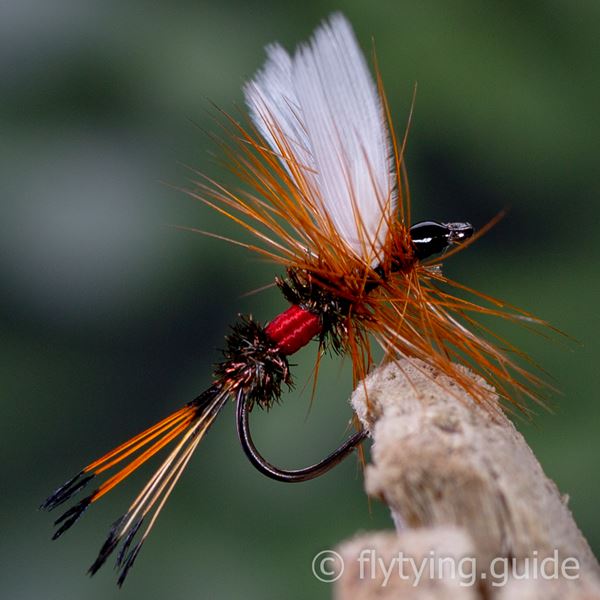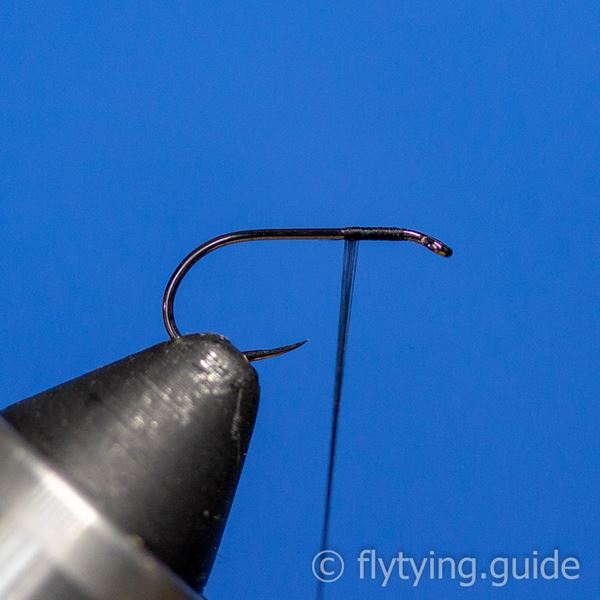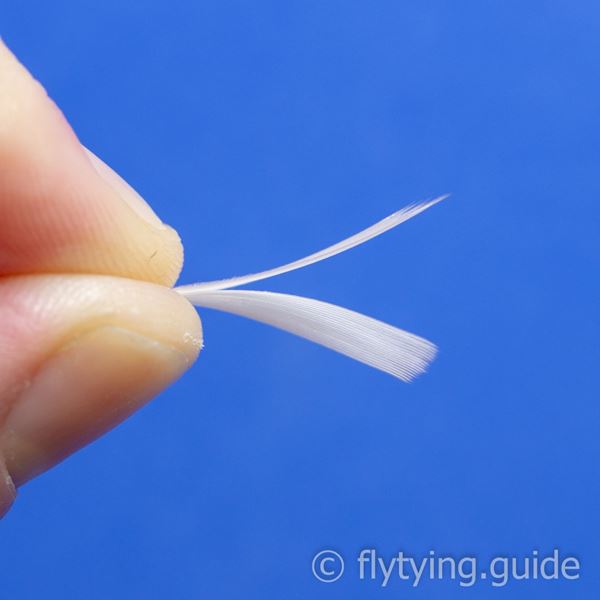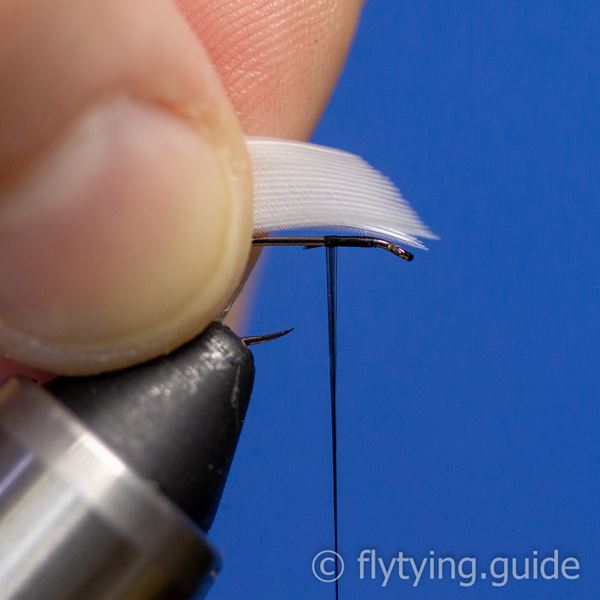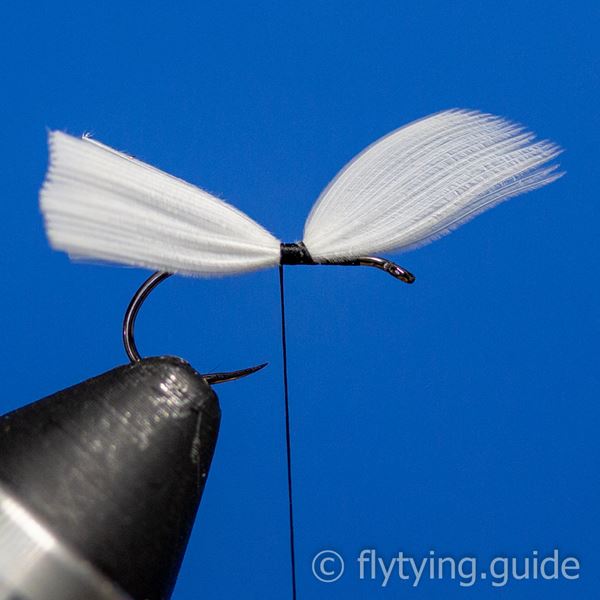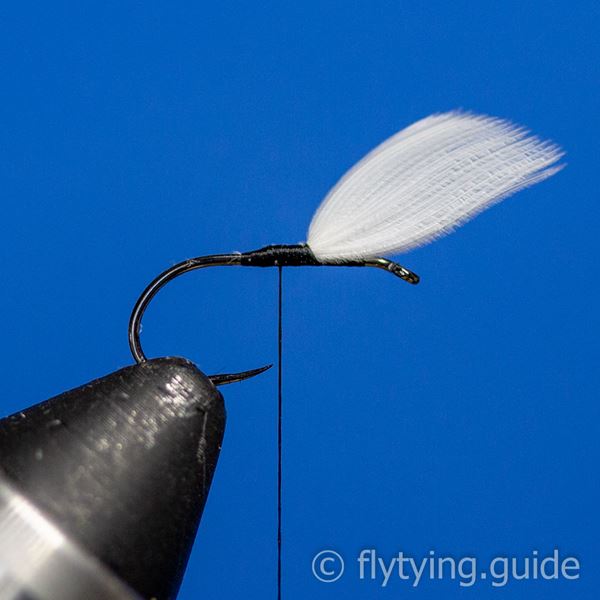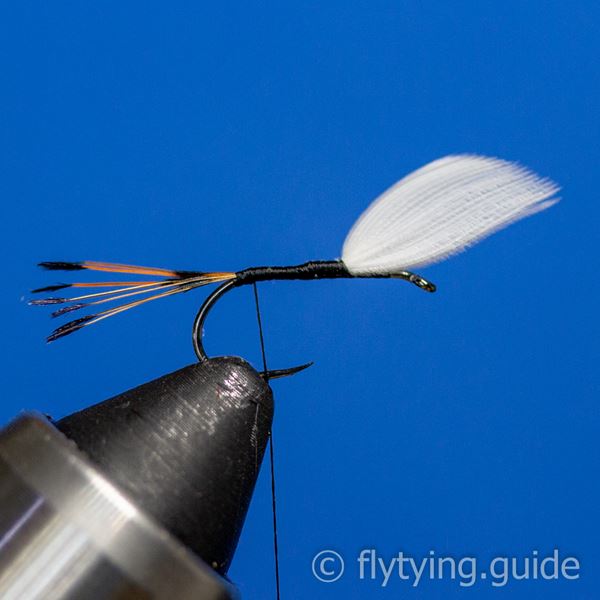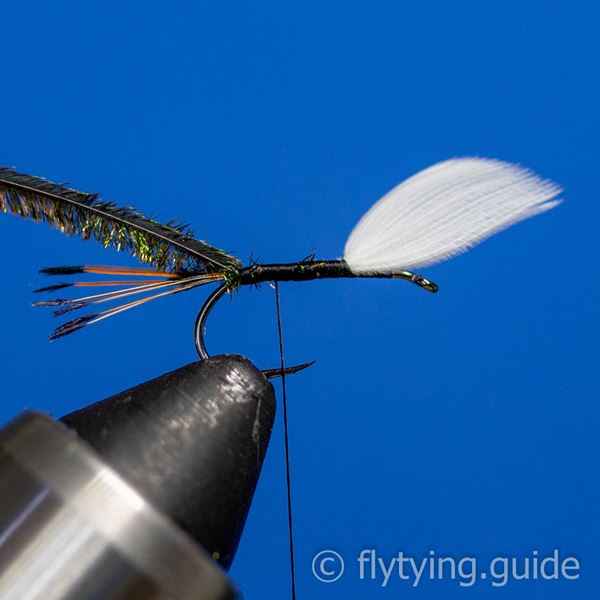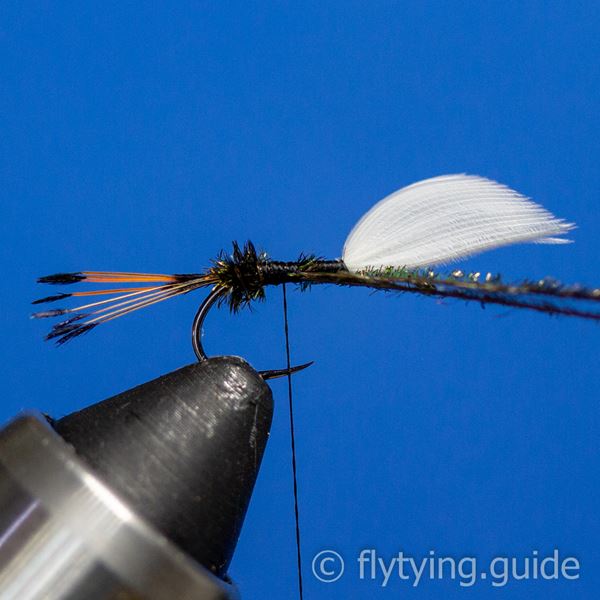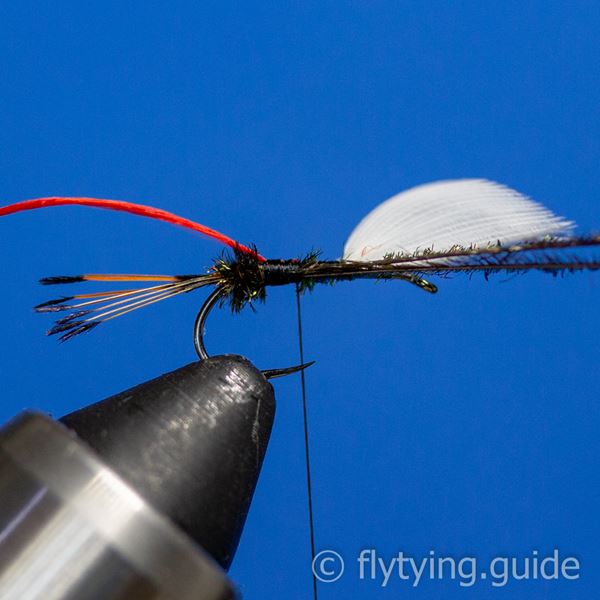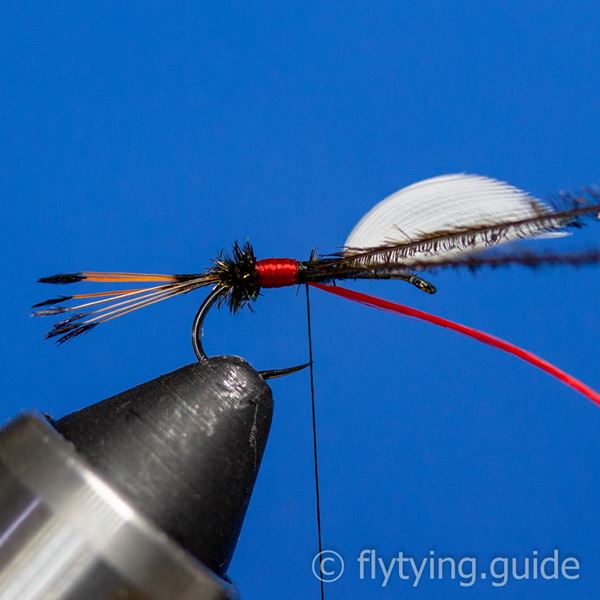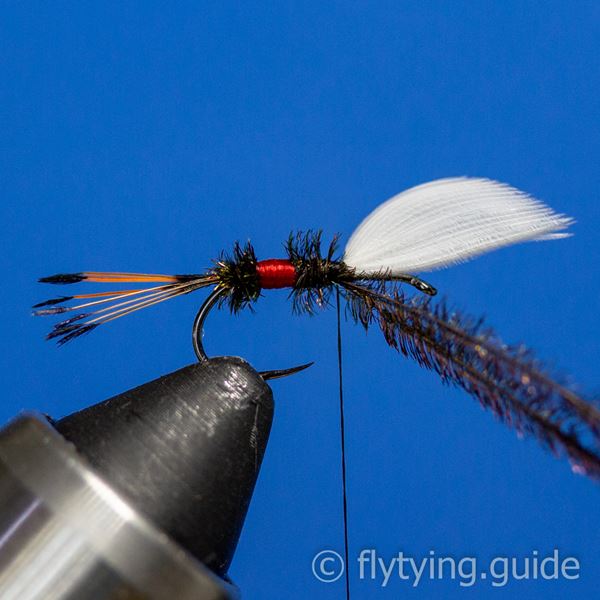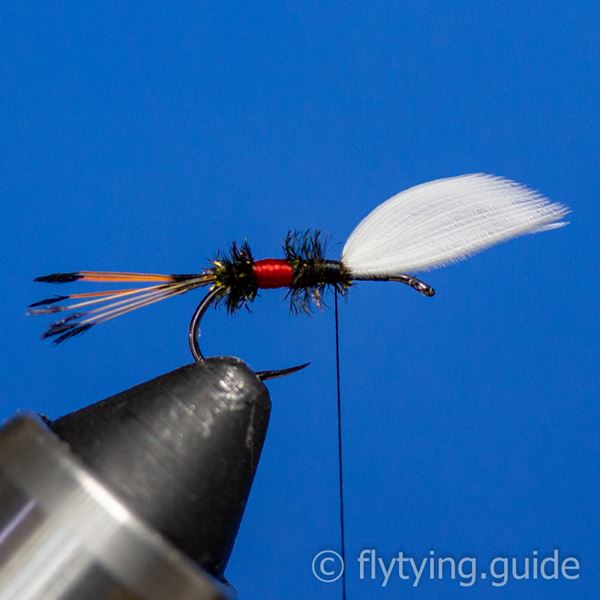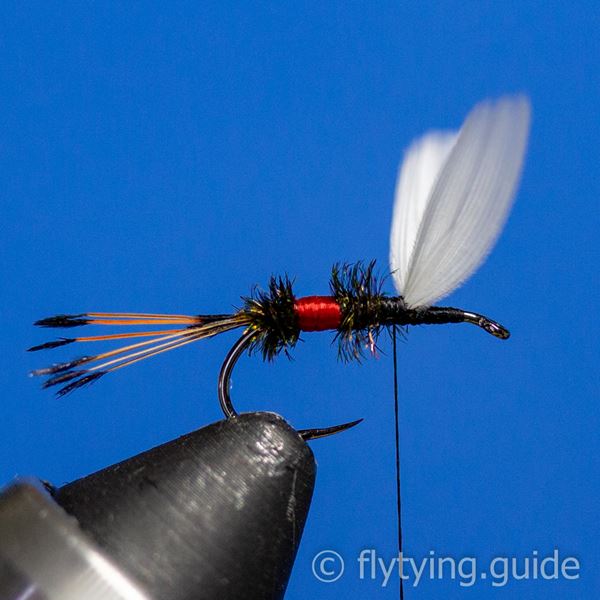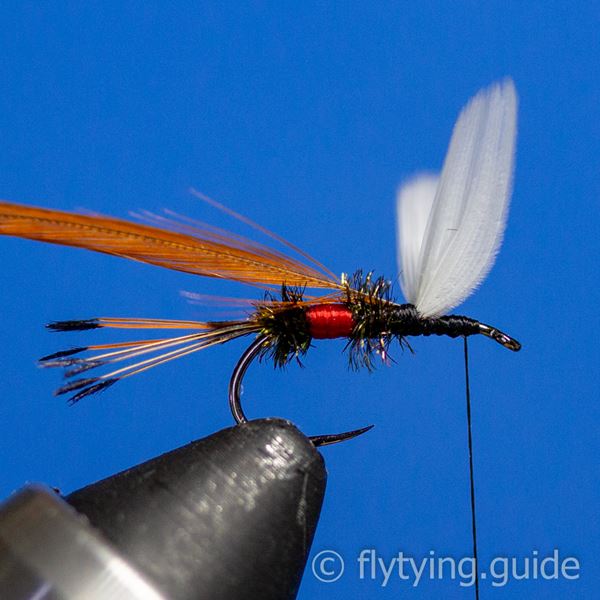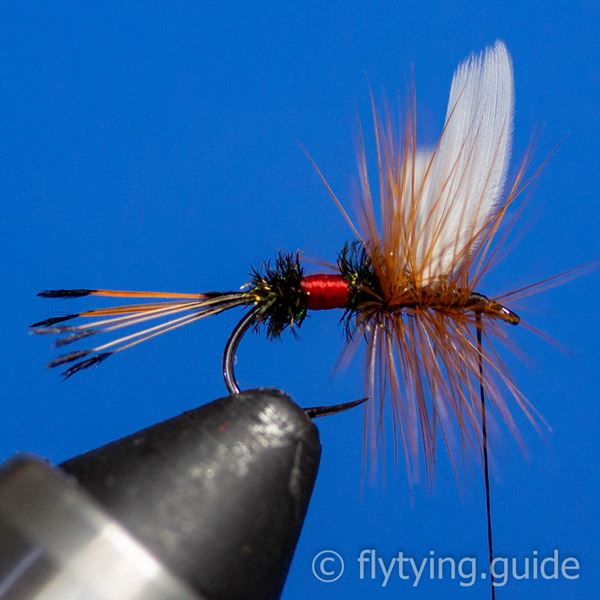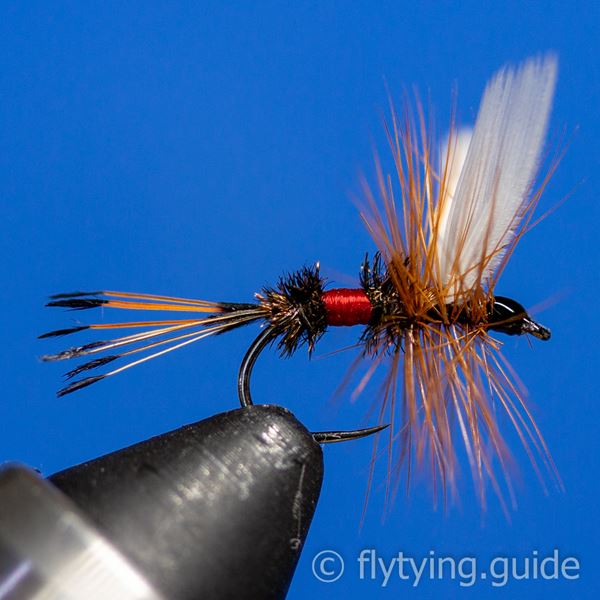Royal Coachman Dry
The royal coachman dry looks very similar to the wet version but uses cock hackle and matched quill slips tied in as an upright style of wing. A tippet tail and red tag in the middle of the peacock herl help give the fly its distinctive look.
- Submitted By: Fly Tying Guide
Materials
9
Begin forming the body by taking 4 or 5 wraps with the peacock herl until you reach the thread, secure the peacock herl. Advance the thread the desired tag width, covering the peacock herl and forming a smooth under body in preparation for the floss. The tag length is typically a similar size as the body parts or slightly smaller.
